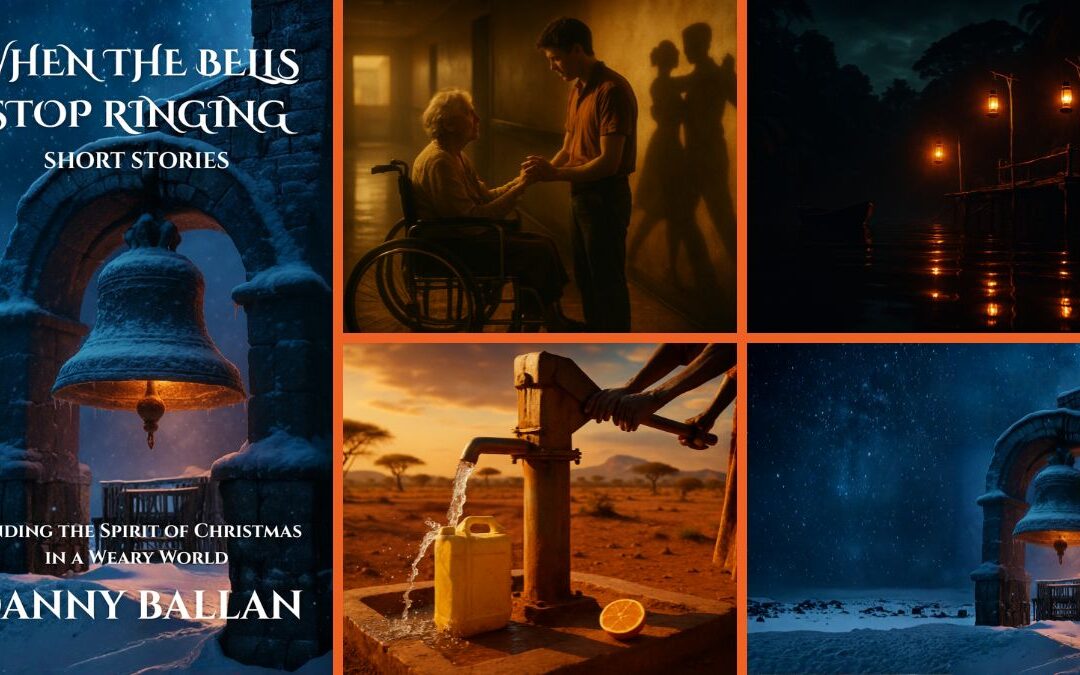- Audio Article
- The Psychology of Peace — Understanding the Human Side of Conflict
- Brains on Alert — The Biology That Makes Conflict Tempting
- Out-Group, In-Group — The Shortcut That Backfires
- Empathy’s Two Engines — Feeling With and Thinking About
- Forgiveness as Strategy, Not Surrender
- Trust — The Compound Interest of Social Life
- Narratives That Heal, Narratives That Harm
- The Workhorses: Self-Regulation and Co-Regulation
- Contact Theory with Grown-Up Footnotes
- Justice That Makes Tomorrow Livable
- Leaders as Nervous Systems in Public
- The Micro to the Macro — Why Household Skills Scale to Nations
- MagTalk Discussion
- Focus on Language
- Vocabulary Quiz
- The Debate
- Let’s Discuss
- Learn with AI
- Let’s Play & Learn
Audio Article
The Psychology of Peace — Understanding the Human Side of Conflict
Peace is not a treaty; it’s a habit the mind rehearses until it becomes second nature. Armies can stand down, borders can soften, and flags can be folded away, yet the human nervous system may remain on patrol. If peace begins anywhere, it begins where stories are authored and alarms are silenced: inside the brain that’s trying to keep a body safe in a world that isn’t always interested in cooperating. That same brain, which can turn a sideways glance into a threat and a rumor into a riot, can also reframe, regulate, and reconcile. The psychology of peace isn’t a soft accessory to “real” politics; it’s the operating system underneath it.
Brains on Alert — The Biology That Makes Conflict Tempting
The human brain prioritizes survival with an enthusiasm that would impress any security consultant. The amygdala—a pair of almond-shaped sentries—detects possible danger faster than a headline travels. When it fires, heart rate climbs, attention narrows, and nuance—poor, delicate nuance—gets shoved off the stage. This is useful if the problem is a snake. It’s unhelpful if the problem is a disagreement about land use, language policy, or whose turn it is to talk. Threat perception is sticky; once the alarm is on, it recruits memory to confirm its wisdom. Threat bias shrinks curiosity, and without curiosity, negotiation is just a performance of stubbornness.
Out-Group, In-Group — The Shortcut That Backfires
We are social creatures who sort quickly. The mind saves energy by categorizing people into “like me” and “not like me,” a process that once helped tight-knit groups survive. But the cheap speed of that sorting can make strangers look dangerous and make data look optional. The more threatened we feel, the more harshly we judge the out-group’s motives while giving the in-group a discount for bad behavior. This is the “fundamental attribution error” with a flag on it: “We were forced; they were greedy.” Peace requires an upgrade from sorting to seeing.
Empathy’s Two Engines — Feeling With and Thinking About
Empathy isn’t only tearful resonance. It has two engines. Affective empathy mirrors emotion: you wince when someone else stubs a toe. Cognitive empathy models perspective: you can explain why someone believes what they believe, even if you’re unconvinced. Affective empathy without boundaries burns people out; cognitive empathy without warmth can turn manipulative. Durable peace depends on a blend: enough feeling to humanize the other, enough perspective-taking to predict their needs and design a deal that works beyond a handshake.
Forgiveness as Strategy, Not Surrender
Forgiveness is frequently miscast as amnesia in a robe. It is not forgetting. It’s an updated contract with your own nervous system: I refuse to let yesterday make all of tomorrow’s decisions. Psychologically, forgiveness reduces rumination—the mental rewatching of a grievance until it mutates into identity. Socially, it disarms the cycle of retaliation that keeps communities poor in both money and imagination. Forgiveness does not cancel justice; it clarifies it. It narrows the target to conduct rather than souls, which is what courts can handle and what neighbors can live with.
Trust — The Compound Interest of Social Life
Trust grows the way savings do: slowly, then suddenly. Each kept promise adds a grain; each lie is a small theft. Neuroscience suggests that reciprocity triggers reward circuits; our brains like fair exchanges. In peacebuilding, trust is scaffolded by predictability: the bus that arrives near the time it promised to, the policeman who writes the same ticket for the rich and the broke, the judge who behaves like a metronome rather than a weather vane. Where daily trust is common, political trust has a chance. Where it isn’t, ideologues find cheap fuel.
Narratives That Heal, Narratives That Harm
Humans think in stories even when we pretend otherwise. Narratives compress complexity and distribute meaning: who we are, what happened, what it means. Conflict narratives often feature innocence and betrayal, destiny and humiliation. Peace narratives substitute dignity for victory and future for fate. They widen the cast list to include repairers, translators, midwives of compromise. The psychology here is simple: a community can only choose reconciliation if it can imagine it without feeling like it betrayed its dead.
The Workhorses: Self-Regulation and Co-Regulation
Regulation is not repression; it’s the skill of steering your state. Self-regulation practices—breathwork, naming emotions, cognitive reappraisal—lower arousal so the prefrontal cortex can do adult work: consider options, tolerate ambiguity, delay gratification. Co-regulation is the interpersonal version: calm voices, eye contact, predictable routines that tell the body “we’re safe here.” Peace processes that ignore regulation invite sabotage from biology. Processes that build it—community rituals, transparent procedures, listening sessions with boundaries—give the mind a stable floor.
Contact Theory with Grown-Up Footnotes
Decades of research suggest that contact between groups can reduce prejudice when conditions are right: equal status in the encounter, shared goals, cooperation, and institutional support. Throw people into a room with snacks and nothing else, and you rehearse awkwardness. Give them a puzzle worth solving—reopening a clinic, restoring a market, repairing a bridge—and you supply the brain with reasons to reclassify the other from “threat” to “resource.” Contact is not magic; it’s logistics with empathy.
Justice That Makes Tomorrow Livable
Without justice, peace is a ceasefire with nicer chairs. But justice must be designed for humans, not angels. Retributive justice—punishment proportionate to harm—satisfies the moral ledger. Restorative justice adds something essential: acknowledgment, repair, reintegration. It answers the nervous system’s question: Did anyone notice what happened to me? When that answer is yes, bodies relax; the appetite for revenge shrinks; memory integrates instead of infecting.
Leaders as Nervous Systems in Public
Leadership is not charisma on a poster; it’s regulation on a stage. Good leaders absorb panic and distribute calm. They model epistemic humility (“Here’s what we know, here’s what we don’t”), which gives followers permission to update without losing face. They speak to identity without weaponizing it. They create ceremonies that honor loss and signal continuity. They are, in effect, public co-regulators who keep the collective prefrontal cortex online.
The Micro to the Macro — Why Household Skills Scale to Nations
If peace is built from human tendencies, then household skills matter: how to apologize without an essay, how to set a boundary without an ultimatum, how to ask for evidence without contempt. These are not domestic arts; they are civic arts practiced at a readable scale. A neighborhood that can hold a tense meeting without breaking furniture is already rehearsing national competence.
MagTalk Discussion
Focus on Language
Vocabulary and Speaking
Let’s put the psychology into phrases you can use when the argument isn’t about borders but about dishes, deadlines, and dignity. Start with “name it to tame it.” When you label an emotion—irritation, embarrassment, resentment—the amygdala loses a little fuel. In practice: “I’m more anxious than angry.” It sounds modest, but it changes the room. Anxiety invites problem-solving; anger invites defense.
“Assume good intent; test for impact” is a two-step that saves relationships. You begin with generosity—no one woke up designing your bad afternoon—and then you measure what actually landed. “I know you were trying to help; the way it came across was dismissive.” That sentence honors motive and corrects behavior without moral theater.
“Slow your story” is a cue to check the narrative your brain is writing at speed. Something happened; your mind wrote a chapter. Ask, “What else could this mean?” Maybe the delay was traffic, not disrespect. Maybe the sharp tone was sleep debt, not contempt. Slowing the story keeps you from litigating fantasies.
“Seek the smallest honest agreement” turns debate from conquest to construction. You may disagree on ninety percent; name the ten you share. “We both want the launch to succeed and the team to sleep.” Agreement is a wedge that widens into collaboration.
“Scale the ask” is the art of not demanding a personality transplant when what you need is a calendar invite. “Could we check in for five minutes on Tuesdays?” That’s a scalable request. People cooperate when they can see the finish line.
“Boundaries prevent blame” is a friendly proverb. If your rule is “no work calls during dinner,” then you don’t need to be a mind reader or a martyr. You have a boundary. The person who wants to break it must now do the explaining.
“State, weight, rate” helps you give feedback without demolition. State what happened; weight the importance; rate your certainty. “You interrupted twice in the meeting; it mattered because the client was testing our discipline; I’m pretty sure I’m right, but I could have missed context.” Certainty with a dimmer switch builds trust.
“Exit ramps over cliff edges” is how you design conversations. Plan one sentence that lets either party take a breath without losing face: “Let’s pause for ten and come back with one suggestion each.” An exit ramp is what keeps the whole thing from becoming a roadside memorial.
“Anchor to dignity” is a motto worth repeating. You can be uncompromising on dignity while being flexible on details. “We can change the policy; we cannot talk to staff like that.” It’s astonishing how much peace survives when dignity is non-negotiable.
Finally, “repair beats victory.” Winning leaves a bruise; repair leaves a scar you can live with. Ask yourself after a heated exchange, “What would repair look like?” Sometimes it’s a sentence; sometimes it’s a schedule; often it’s both.
Now, the speaking workout. Record a ninety-second voice note about a recent misunderstanding. Use at least eight of the phrases above—name it to tame it, assume good intent; test for impact, slow your story, seek the smallest honest agreement, scale the ask, boundaries prevent blame, state-weight-rate, exit ramps, anchor to dignity, repair beats victory. Start by labeling your emotion. Recount the story you told yourself, then slow it, offering at least two alternative interpretations. Identify the smallest honest agreement and one boundary. Use state-weight-rate to deliver feedback. Propose an exit ramp for next time and end with a repair request. Listen for tone; remove any sarcasm you didn’t intend. Replace one abstract phrase with a concrete act: “Show up by 9:05” beats “Be more professional.” Then try it live with a friend who will challenge you. The goal is confidence without combustion.
Keep practicing short, clear turns of speech: “Here’s what I heard; here’s what I need; here’s what I can offer.” That triad is a pocket-sized peace process.
Grammar and Writing
Your writing challenge: compose a 900–1,100-word personal essay titled “My Nervous System at the Negotiating Table.” The task is to narrate a real or plausible conflict—a disagreement with a colleague, a neighbor dispute, a family rift—and to show how psychological tools changed the outcome. You’re not preaching; you’re reporting from the inside.
Structure and grammar to make it sing:
- Open with sensory detail and present tense to place the reader in your body: “The office hums; my jaw clicks. He says ‘calm down,’ and my chest chooses not to.” Present tense magnifies immediacy. Limit it to the first scene; then drop into past for reflection.
- Introduce a concessive thesis early: “Although I believed I needed the perfect argument, I actually needed a better nervous system.” Concessive clauses (“although,” “even though,” “while”) announce complexity and win trust.
- Use appositives to compress psychology: “Rumination, the mental habit of binge-watching a grievance, stalked my commute.” The appositive (“the mental habit…”) reveals your command without sending the reader to a glossary.
- Deploy relative clauses to sharpen detail: “He apologized in a tone that, while quiet, carried the old sarcasm.” The clause lets you thread nuance without sprawl.
- Practice parallelism when listing tools: “I named the feeling, slowed the story, and asked for the smallest honest agreement.” Parallel syntax is rhythm plus memory.
- Modulate certainty with stance adverbs and modals: “I was probably catastrophizing; I should have asked for time.” “Probably” and “should” humanize your authority.
- Make dialogue purposeful and compressed. Avoid full-dress transcriptions. Use snippets that push the story forward: “Five minutes? Tuesday. Done.”
- End paragraphs with conceptual hinge words: “still,” “yet,” “so,” “anyway.” They propel reading and signal your next move.
- For the close, switch briefly to future conditional to widen the lens: “If I can keep naming and repairing, the next fight will be shorter—a conversation with exit ramps instead of cliff edges.” That tense earns hope without sentimentality.
Editing clinic:
- Hunt for nominalizations—nouns that used to be verbs (“implementation,” “evaluation”). When possible, revert to verbs: implement, evaluate. Verbs are where the pulse lives.
- Replace hedge clusters with a single, honest hedge. Instead of “I kind of, sort of felt,” write “I hesitated.” You sound clearer and kinder.
- Build image chains—repeated, evolved images that frame the theme. If you open with the jaw clicking, maybe you close with the jaw unclenching as the coffee cools. Echo, don’t copy.
- Check cadence: vary sentence length deliberately. One long sentence can carry the cognitive load; the next can land like a verdict. “I was safe. I could listen.”
Turn the piece into an op-ed by swapping I for we and adding policy muscle: a paragraph on restorative practices at work, another on trauma-informed public services, a third on teaching “state-weight-rate” in schools. Keep the grammar moves. Anchor to dignity.
Vocabulary Quiz
The Debate
Let’s Discuss
- What daily rituals at home or work improve co-regulation? Consider opening check-ins, timed pauses, shared summaries, and how those affect trust over months.
- When is forgiveness wise, and when is it premature? Explore the difference between private release and public accountability; discuss safeguards that protect dignity while reopening dialogue.
- Which stories in your community honor repair rather than victory? If none come to mind, how might schools, media, and local ceremonies highlight bridge-builders without turning them into saints?
- How could local institutions prebunk escalation? Imagine workplace “exit ramp” policies, neighborhood mediation rosters, and shared language like state-weight-rate posted in public offices.
- What metrics could track psychological peace? Brainstorm proxies—school attendance consistency, community participation rates, restorative-justice case closures—and how to prevent gaming those numbers.
Learn with AI
Disclaimer:
Because we believe in the importance of using AI and all other technological advances in our learning journey, we have decided to add a section called Learn with AI to add yet another perspective to our learning and see if we can learn a thing or two from AI. We mainly use Open AI, but sometimes we try other models as well. We asked AI to read what we said so far about this topic and tell us, as an expert, about other things or perspectives we might have missed and this is what we got in response.
Let’s zoom in on three under-discussed levers.
First, micro-safety architecture. People de-escalate when rooms do. Lighting, sightlines, acoustics, and seating shape behavior. If your city hall’s public forum is a shouting tunnel with a ticking microphone, you designed adrenaline. Rebuild a room—round seating, visible agendas, timers everyone can see—and watch tempers drop ten degrees without a single speech about civility.
Second, dignity-preserving correction. Institutions must correct error without humiliation or secrecy. Publish procedures, apply them evenly, give reasons in plain language, and build appeals that don’t require a lawyer. When people feel they can lose without being erased, they stop trying to win by burning the house down.
Third, identity elasticity. Communities either freeze identity into brittle statues or stretch it to include tomorrow’s neighbors. Teach layered identity—local, professional, national, global—so a political loss in one layer doesn’t feel like an existential extinction in all the others. Elastic identity is conflict’s worst enemy.
One more practical note: rehearse peace. We drill fire escapes and earthquake crouches; we should drill apology, boundary-setting, and halt-words. Give teams a monthly five-minute “repair rehearsal.” Make it boring. You’re training muscle memory for the day it counts.
Let’s Play & Learn
Learning Quiz: Words that Heal: Can You Choose the Most Empathetic Response?
Empathy isn’t just a feeling—it’s also a skill you can practice with words. This quiz helps you find the language that eases tension, shows understanding, and invites collaboration. In each short dialogue, you’ll choose the most empathetic and peace-building response. Along the way, you’ll learn useful phrases for acknowledging feelings, apologizing well, asking curious questions, and proposing next steps. The hints nudge your thinking, and the feedback explains why one option is more constructive than the others. By the end, you’ll have a ready-to-use toolkit for everyday conversations—at work, at home, and anywhere people disagree but still want to stay connected.
Learning Quiz Takeaways
Empathy is not a personality trait reserved for a few naturally gentle souls; it’s a set of language habits anyone can learn. If you found yourself improving as you moved through the quiz, that’s because each question asked you to choose a small, repeatable move: acknowledge a feeling, ask a curious question, offer a fair boundary, or propose a next step. Put enough of those moves together and you get conversations that repair trust instead of eroding it. Let’s unpack the most useful patterns and show how to bring them into your everyday English.
Start with validation. In practice, validation means saying out loud that another person’s inner world makes sense. “That sounds really tough,” “I hear that this timeline feels heavy,” “Thanks for telling me”—these are simple phrases that name reality without judgment. Notice how they work even when you disagree on facts. You can validate the feeling (“You felt sidelined”) while still seeking better information (“Which part landed that way so we can fix it?”). Validation reduces the urge to argue about intent. It signals, “Your experience matters to me,” which turns down the temperature and makes the rest of the conversation possible.
Then add curiosity. Curiosity is the antidote to defensiveness. Instead of explaining yourself, you invite more detail: “Can you share what felt off so I don’t repeat it?” or “What specific info would make this clearer?” When you ask precise questions, you gather the data you need to repair harm or improve plans, and you show respect by letting the other person be the expert on their own feelings. Curiosity shifts the goal from winning to understanding. That alone is often enough to stop the spiral.
Language that de-personalizes blame is the next tool. I-statements—“I felt worried when the plan changed without notice; can we set a heads-up rule?”—own your feeling, describe the behavior, and make a concrete request. This structure avoids the “You always/You never” trap that paints people into corners. You’re not diagnosing their character; you’re naming an effect and proposing a fix. When you keep the focus on patterns and processes (“let’s list blockers and assign next steps”), you preserve dignity on all sides.
Accountability is empathy’s backbone. A strong apology names impact and shows change: “I’m sorry my error caused extra work. Here’s what I’ve changed to prevent a repeat.” Compare that to a weak “I’m sorry if anyone was offended,” which casts doubt and dodges responsibility. Accountability keeps relationships from becoming scorecards. You don’t have to punish yourself to repair; you just have to be specific about what went wrong and what will be different. In professional settings, accountability is not only kind—it’s efficient, because it prevents the same issue from stealing time again.
Boundaries make empathy durable. Without boundaries, helpfulness becomes resentment. Language like “Let’s agree on quiet hours and I’ll use a mute setup after that” or “I’ll text if I’m running behind and set a reminder” respects both parties. A good boundary states the shared goal (peaceful evenings, reliable coordination) and the behavior you’ll commit to. Boundaries are not walls; they are bridges that allow traffic to move safely in both directions.
Sequencing helps too. Productive dialogues often follow a path: validate → clarify → propose → check. One example: “I see why that matters to you (validate). Could we map where we agree first (clarify values), then explore differences (propose structure)? Does that work for you (check)?” When conflicts feel stuck, suggest a process rather than a position: summarize the other side before replying, take turns, timebox, or postpone solutions until feelings are heard. These small structures act like scaffolding—temporary supports that let people rebuild trust.
Empathy also lives in micro-choices of wording. Swapping certainty for openness—“Here’s how I’m seeing it” instead of “I’m right”—gives others room to join you. Replacing absolutes with specifics—“Yesterday’s meeting” instead of “You always”—keeps the conversation fair. Using present-focused language—“What can we adjust together?”—prevents the past from swallowing the future. Even tiny hedges (“It seems…” “I wonder…”) can soften the edges enough to keep listening alive.
Respect for identity is non-negotiable. When someone shares pronouns or cultural boundaries, the most empathetic move is straightforward: thank them, commit to respectful language, and invite correction if you slip. This isn’t political performance; it’s hospitality—the kind you offer with names, dietary needs, or accessibility. Recognizing identity is simply another way of saying, “You belong here, and I want to get it right.”
Listening techniques transform the feel of a conversation. Reflective listening—“Can I reflect back what I’m hearing and you tell me what I miss?”—lets the speaker correct misunderstandings before they harden into arguments. Summarizing (“Here’s what I think you’re saying…”) slows fast exchanges and exposes hidden agreements. Offering choices (“Do you want to debrief or just vent?”) gives control to the person in pain and prevents uninvited advice from landing like criticism.
Repair requires action. Words that heal often come paired with small, observable steps: edit a post for clarity, reschedule a missed plan, set a reminder to be on time, agree on meeting facilitation so quieter voices are invited in. When language and action match, trust grows quickly. When they don’t, people learn to discount both. So treat your promises like a product launch—announce less than you can deliver, then deliver fully.
You may notice that empathy takes practice precisely when you least feel like practicing it. Stress pushes us toward shortcuts: minimization (“It’s not a big deal”), deflection (“Others interrupt too”), or counterattack (“Prove it”). That’s why pre-built phrases matter—they’re your emergency toolkit. “Thanks for telling me…” “I hear that…” “Help me understand…” “Here’s what I’ll change…” Write a few on a sticky note or save them in your phone. The goal is not to sound scripted; it’s to have a safe path when your brain wants to protect you by fighting or fleeing.
Finally, remember that empathy is not agreement and compassion is not capitulation. You can validate a feeling and still hold a boundary. You can apologize for your impact and still explain your intent later—after repair. You can seek common ground without erasing real differences. The point is not to avoid conflict; it’s to conduct conflict in a way that preserves relationships and makes learning possible. That’s what reconciliation looks like in ordinary life: not a grand ceremony, but a series of small, sincere exchanges where people feel seen, respected, and invited into the next step.
If you keep only one habit from this lesson, make it this: slow down enough to name the human stakes, then move one step forward together. In English, that sounds like, “I see your point. Here’s what I can do. What would help on your side?” With that rhythm—acknowledge, commit, collaborate—you’ll find that even hard conversations can become bridges, and the words you choose can be the first stones in rebuilding trust.










0 Comments